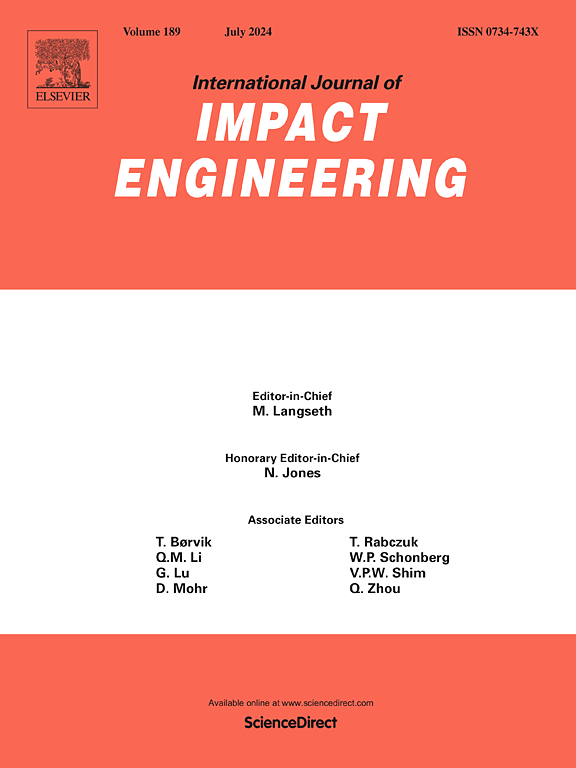Validation of a coupled element-particle approach to debris analysis during hypervelocity impact
IF 5.1
2区 工程技术
Q1 ENGINEERING, MECHANICAL
International Journal of Impact Engineering
Pub Date : 2025-03-29
DOI:10.1016/j.ijimpeng.2025.105340
引用次数: 0
Abstract
Typically, numerical modeling of hypervelocity impact is done using Smoothed Particle Hydrodynamics. When traditional Finite Element Methods are employed to model hypervelocity impact events numerical instabilities due to significant element distortion results in negative volumes that require element erosion. When elements are eroded, energy is no longer conserved, and the contact interface changes, resulting in inaccurate forces at the surface of contact. For this reason, Smoothed Particle Hydrodynamics is typically implemented to numerically model hypervelocity impact events. While Smoothed Particle Hydrodynamics does not suffer from element distortion due to the meshless nature of using a purely particle approach, this method does not provide an adequate method of analyzing surviving fragments and debris. Experimental results from hypervelocity impact tests have shown that in many cases large debris may survive the impact, but when using a particle method, the result is a cloud of fine particles unable to resolve this larger debris. A technique to couple both methods, by initially defining components out of traditional finite elements, and assigning ghost particles to replace those elements when they fail, has recently allowed for improved debris characterization. This coupled method has yet to be thoroughly validated for hypervelocity impact numerical modeling. In this analysis a thorough validation of the coupled element-particle method compared against pure SPH methods is conducted, through numerical validation of both the FEM and SPH methods during high-strain rate Taylor bar experiments of OFHC copper, and the implementation of a coupled element-particle hypervelocity impact model. Velocimetry data from experimental hypervelocity impacts is used to assess the accuracy of both the coupled element-particle method, and the purely SPH method. Additionally, the solid debris generated by the coupled element-particle model is compared against the debris from experimental radiographs.
求助全文
约1分钟内获得全文
求助全文
来源期刊

International Journal of Impact Engineering
工程技术-工程:机械
CiteScore
8.70
自引率
13.70%
发文量
241
审稿时长
52 days
期刊介绍:
The International Journal of Impact Engineering, established in 1983 publishes original research findings related to the response of structures, components and materials subjected to impact, blast and high-rate loading. Areas relevant to the journal encompass the following general topics and those associated with them:
-Behaviour and failure of structures and materials under impact and blast loading
-Systems for protection and absorption of impact and blast loading
-Terminal ballistics
-Dynamic behaviour and failure of materials including plasticity and fracture
-Stress waves
-Structural crashworthiness
-High-rate mechanical and forming processes
-Impact, blast and high-rate loading/measurement techniques and their applications
 求助内容:
求助内容: 应助结果提醒方式:
应助结果提醒方式:


